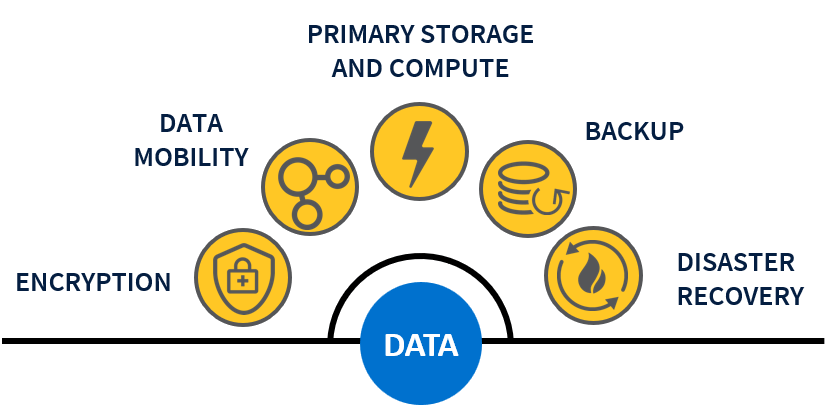December 12, 2019 by Siobhan Climer
Each year, we lay out advancements affecting the technology industry – those that have happened and those that have not yet come to pass – to better understand potential roadblocks in the year ahead and how organizations might adopt new technologies to overcome those obstacles.
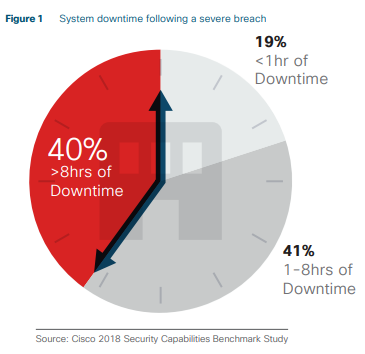 2019 was a rich year for technological advancement. Whether you are fascinated by cybersecurity or network infrastructure, data center hardware or the public cloud market, there was a lot about which to be excited. The MIT Technology Review had Bill Gates identify the biggest technological leaps of 2019; he hit the mark, including everything from robotic dexterity and predictive analytics to wearables and AI voice assistants.
2019 was a rich year for technological advancement. Whether you are fascinated by cybersecurity or network infrastructure, data center hardware or the public cloud market, there was a lot about which to be excited. The MIT Technology Review had Bill Gates identify the biggest technological leaps of 2019; he hit the mark, including everything from robotic dexterity and predictive analytics to wearables and AI voice assistants.
2020 promises to be an interesting year, offering up new dreams and opportunities. Our analysts reviewed the potential for growth and advancement in the year ahead to help us curate this list of the top technology trends for 2020 – and beyond.
Increase In Cybersecurity Threats And Spending
Back in 2016, Cybersecurity Ventures predicted cybercrime damages would cost the world $6 trillion by 2021. Today we are more than halfway to that benchmark, which appears to be holding steady. Cyberattacks are the fast-growing crime in the U.S., and everyone from journalists to PR teams are taking note.
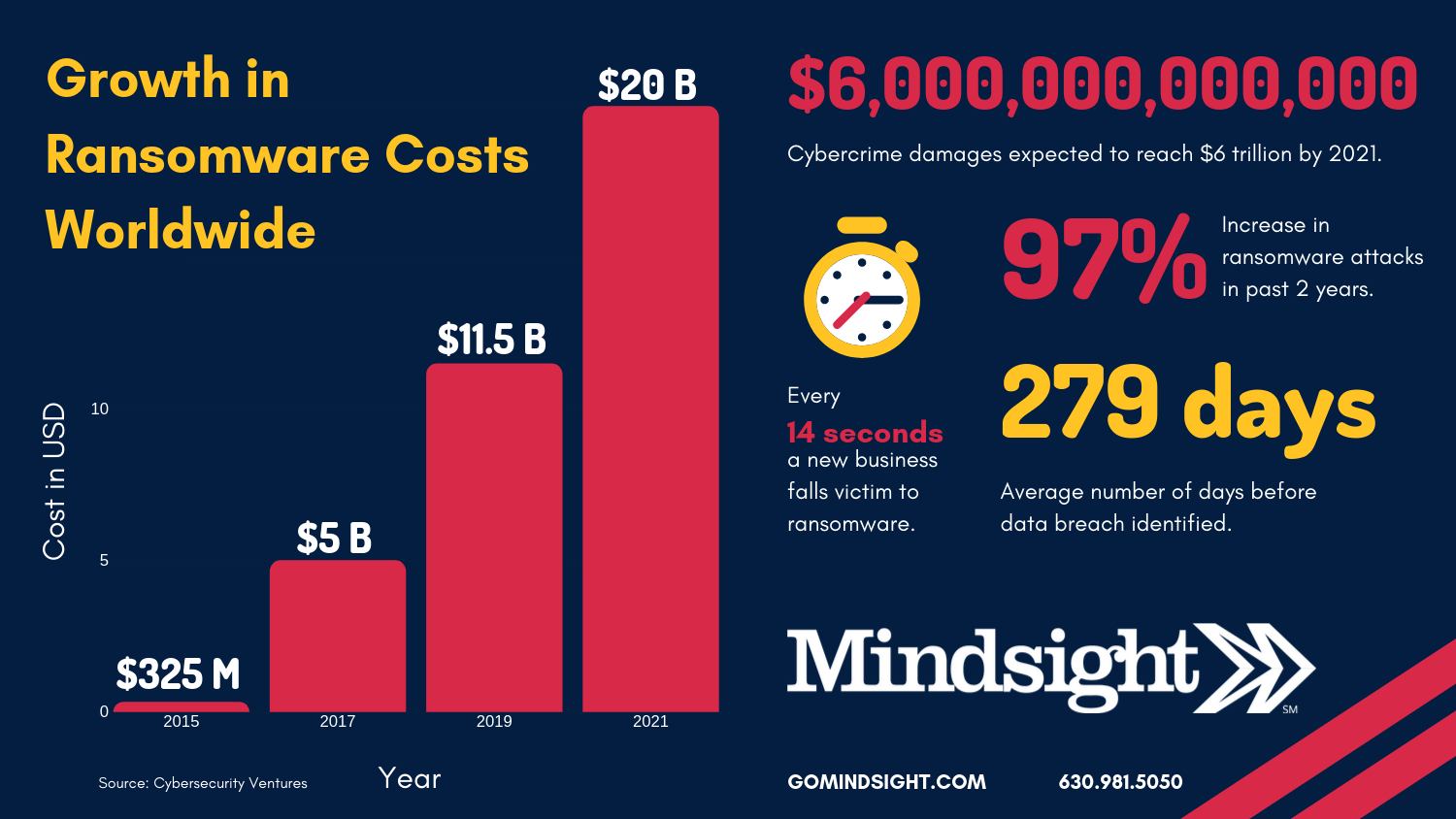 With the increased visibility of cybersecurity threats, consumers and the companies they support are taking action. The cybersecurity market has grown more than 30x in the last 13 years, and security spending is outpacing IT spending overall.
With the increased visibility of cybersecurity threats, consumers and the companies they support are taking action. The cybersecurity market has grown more than 30x in the last 13 years, and security spending is outpacing IT spending overall.
The threats are very real. From DDoS to ransomware, zero-day exploits to massive data breaches, businesses and individuals are affected every day; in fact, ransomware claims a new victim every 14 seconds.
Read more about the history of cyberattacks here.
To protect themselves and the data on which they rely, businesses are looking to data backups and validated disaster recovery programs. Taking the time to roadmap and test a disaster recovery strategy can go a long way toward recovering from what should be an anticipated ransomware attack or data breach.
Yet even if your data is recoverable, your reputation may never be salvaged. That’s why 2020 will be the year businesses around the globe adopt more targeted security guidelines, invest in security awareness training, and examine security postures to refine the solutions they use.

Cloud Semantics
The cloud almost always comes up in any disruptive technology conversation – and rightfully so. Cloud computing has completely changed the way companies do business, users access and share services, and even the kinds of businesses being built.
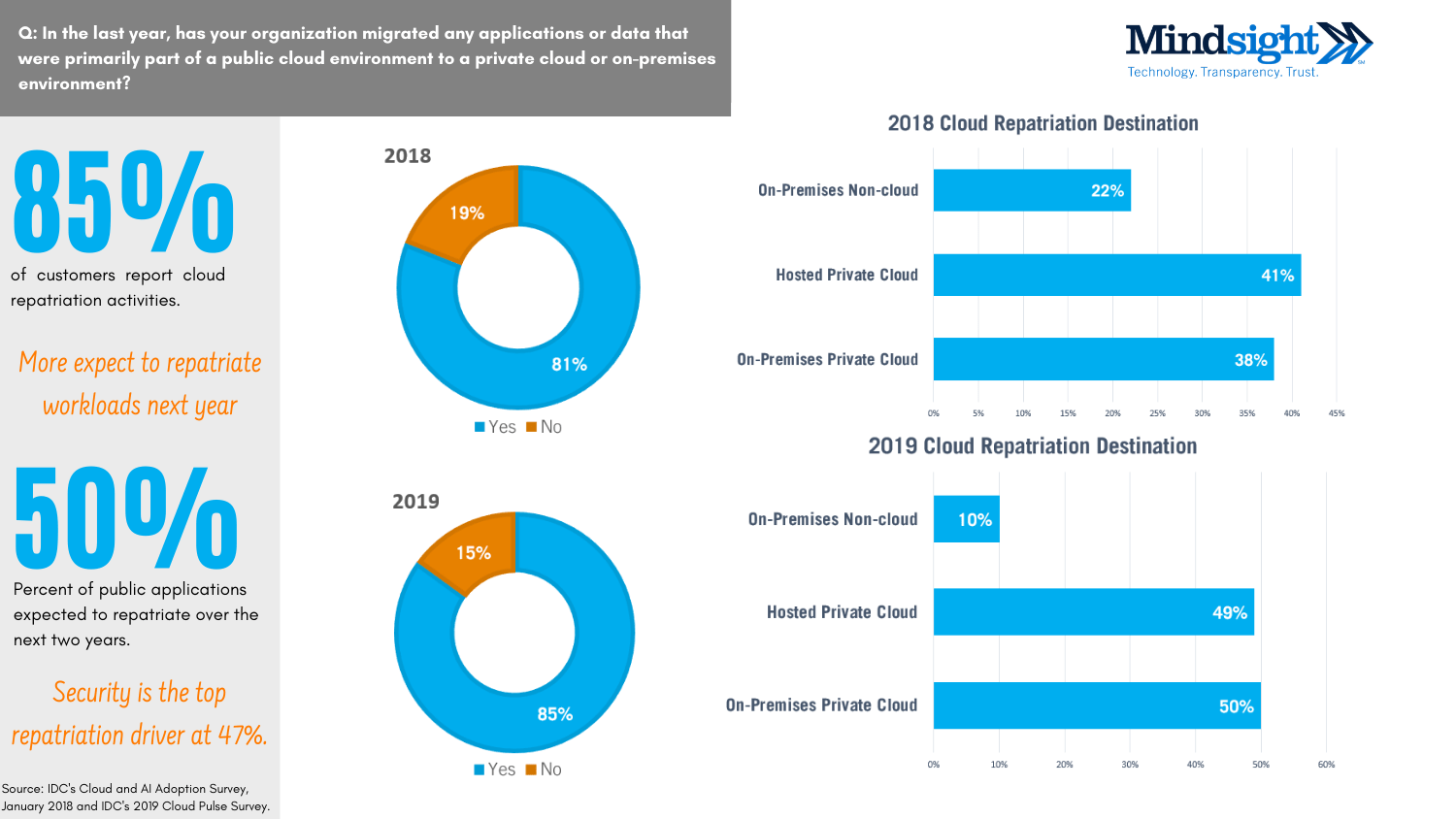 2019 saw a great deal of semantic debates. These disputes will take center stage as analysts refine the definitions of multicloud, edge computing, and continue refining the more fundamental private, public, hybrid cloud terminology. These debates have purpose; with an improved understanding of why and how companies are using the cloud, strategic cloud deployments will be more successful.
2019 saw a great deal of semantic debates. These disputes will take center stage as analysts refine the definitions of multicloud, edge computing, and continue refining the more fundamental private, public, hybrid cloud terminology. These debates have purpose; with an improved understanding of why and how companies are using the cloud, strategic cloud deployments will be more successful.
This is precisely why cloud repatriation is so prevalent. A lack of understanding around cloud use cases coupled with nonstrategic planning left many organizations facing higher costs or hiccups in service delivery. In 2020, businesses will continue shifting workloads back from the cloud, realigning the technology to business objectives, and only then redeploying to the cloud in a more targeted, strategic manner.
The reality is that by 2022, 70% of enterprises will integrate cloud management across public and private clouds by deploying unified management tools, and 50% of new enterprise IT infrastructure will be at the edge. The public cloud market is going to continue to grow. If you aren’t in the cloud yet, it’s time to get on the bandwagon.
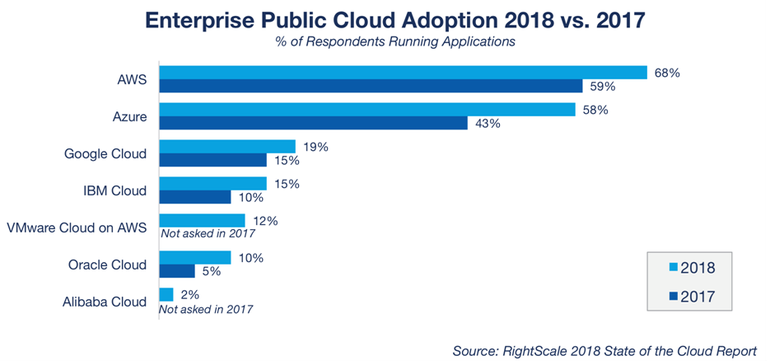
Data Overload
The amount of data companies now have access to is massive. Whether it’s the best time to send an email, the speed at which CSRs resolve calls, the incidence rate of targeted security breaches, or how many customers purchase crunchy pickles – there is no end to the quantity of data collected.
 But the quality? It takes a data scientist or someone with a solid understanding of statistics and probability to make valid insights from data. Businesses today tend to be overwhelmed by the data they receive – and are often led to the wrong insights by misinterpreting data.
But the quality? It takes a data scientist or someone with a solid understanding of statistics and probability to make valid insights from data. Businesses today tend to be overwhelmed by the data they receive – and are often led to the wrong insights by misinterpreting data.
2020 will see a chasm develop between those that invest in data analysis and those that don’t. Data scientists and analysts will be more valuable, and smart organizations will invest in data analysis to improve operations and service to clients.
Analytics And Reporting
If there’s more data, there’s more analysis to be done. Leaders in every industry are getting better at asking questions – and finding that the answer is within their grasp. Users expect applications to reduce the manual workload of analytics and reporting – and our most-used software apps are trying to keep pace.
In Deloitte’s Tech Trends 2019 report, analysts write:
“Today companies need the ability to predict (I have a good idea what will happen next) and prescribe (I can recommend a response). But this is no simple undertaking. Though analytics engines, algorithms, and supporting infrastructure have grown more powerful, the amount of data available for analysis has grown exponentially. Organizations should consider information beyond the well-formed data that lives within traditional IT systems.
How can a company leverage machine logs and sensor data, still images, video, audio, biometric information, government research, and sentiment from social feeds? How does it tap into data across its own boundaries, as well as data sources that live outside its four walls? For many companies, remaining competitive in the marketplace depends on their ability to answer those questions. And to move core data management and data architecture capabilities from flights of fancy to foundations forces.”
We simply can’t say it more eloquently.
AI, ML, Bots, and More
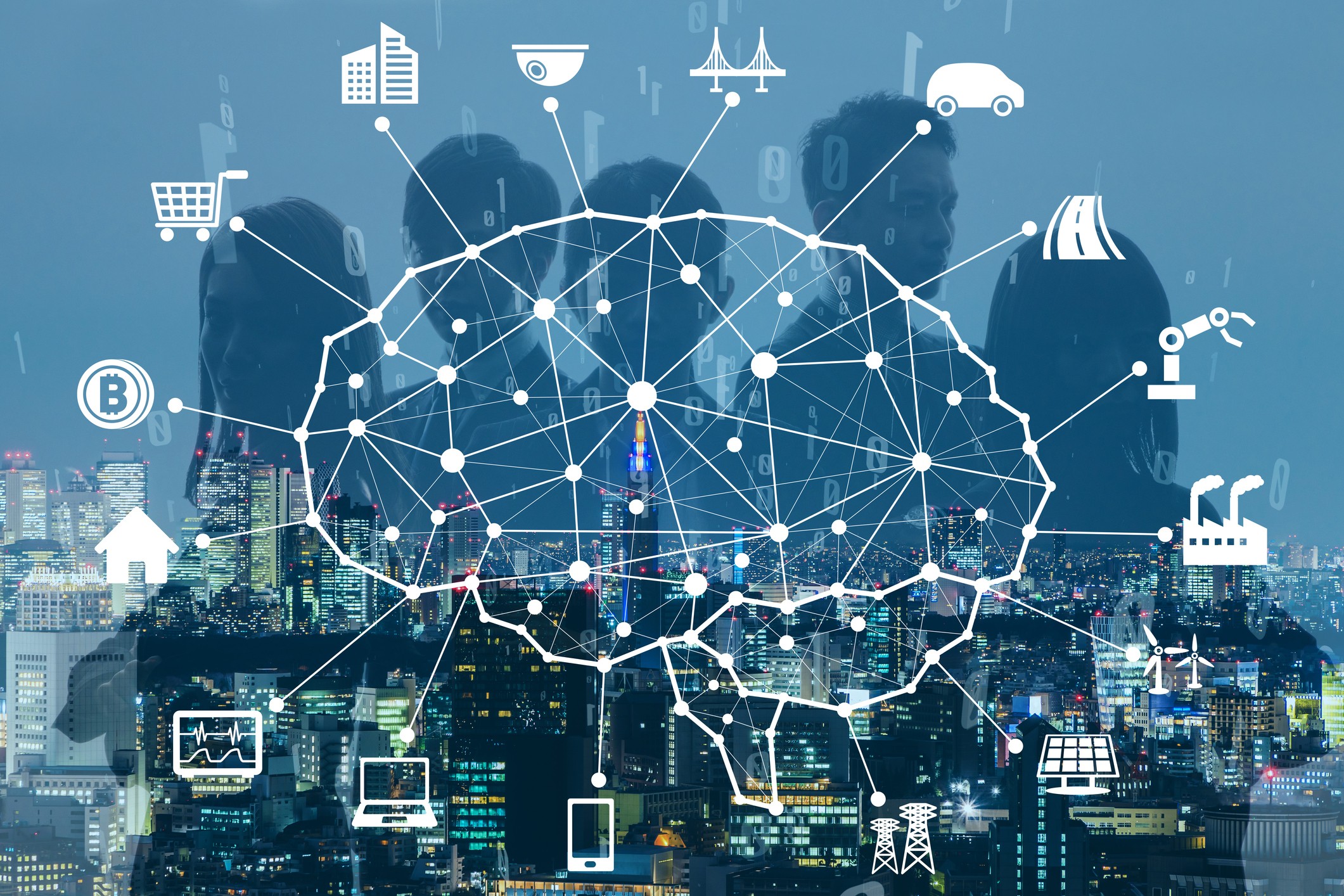 Part of that data management relies on the huge advancements happening within the realms of Artificial Intelligence (AI), machine learning, bots, and the underlying technology that powers them.
Part of that data management relies on the huge advancements happening within the realms of Artificial Intelligence (AI), machine learning, bots, and the underlying technology that powers them.
In terms of consumer-facing technology, voice assistants have made dramatic changes in the way people browse and purchase products. In fact, by 2024 it is expected the World Health Organization will identify online shopping as an addictive disorder as millions abuse digital commerce and encounter financial stress.
From natural speech recognition to tools like chatbots and predictive purchasing engines, 2020 will likely see the customer experience come head to head with consumer well-being and privacy.
Learn more about this perceived “Age of Convenience” in our upcoming paper. Subscribe for release updates.
dHCI: Disaster-Proofing Infrastructure
Hyperconverged infrastructure (HCI) has long been billed as the most advanced data center infrastructure – and, up until now, it was. Today, though, disaggregated hyperconverged infrastructure (dHCI) is catching the eye of everyone from Gartner analysts to system admins.
If you haven’t heard of dHCI yet, you are probably not alone. 72% of attendees of Mindsight’s How dHCI Integrates 5 Core DC Functions had not heard of dHCI prior to the event.
Read our blog on dHCI for a full briefing, but in terms of data center trends, you can expect to hear more about this new architecture that integrates disaster recover, backup, primary storage and computer, encryption, and data mobility into a single management platform.
Collaboration Tech Sneaks In
 Over 3.2 million Americans work from home, and more than 25% of US employees work remotely at least part-time. With that number only expected to climb, collaboration technology will likely dominate conference rooms and companies for the foreseeable future.
Over 3.2 million Americans work from home, and more than 25% of US employees work remotely at least part-time. With that number only expected to climb, collaboration technology will likely dominate conference rooms and companies for the foreseeable future.
Collaboration technology is often after-thought to IT, but data sharing and video conferencing are incredibly value from a productivity and operation efficiency standpoint.
In 2020, Operations, IT, and Human Resources will converge to decide the fate and leadership around the technology that powers collaboration, community, and teamwork within the organization.
Cybersecurity: The Technology Market’s Umbrella
The thread that connects everything today is security. Whether it is around protecting internal documentation, patented information, customer’s personally identifiable information (PII), or the company’s image – security pervades everything.
In 2020, we predict a reckoning for cybersecurity practices. Businesses will need to assess their risk and decide to invest in security and privacy or risk the fallout and bankruptcy that will inevitably come from a breach of data and – more importantly – trust.
Like what you read?
Contact us today to discuss our technology expertise.
About Mindsight
Mindsight, a Chicago IT services provider, is an extension of your team. Our culture is built on transparency and trust, and our team is made up of extraordinary people – the kinds of people you would hire. We have one of the largest expert-level engineering teams delivering the full spectrum of IT services and solutions, from cloud to infrastructure, collaboration to contact center. Our customers rely on our thought leadership, responsiveness, and dedication to solving their toughest technology challenges.
Contact us at GoMindsight.com.
About The Author
Siobhan Climer, Science and Technology Writer for Mindsight, writes about technology trends in education, healthcare, and business. She writes extensively about cybersecurity, disaster recovery, cloud services, backups, data storage, network infrastructure, and the contact center. When she’s not writing tech, she’s reading and writing fantasy, gardening, and exploring the world with her twin daughters. Find her on twitter @techtalksio.
